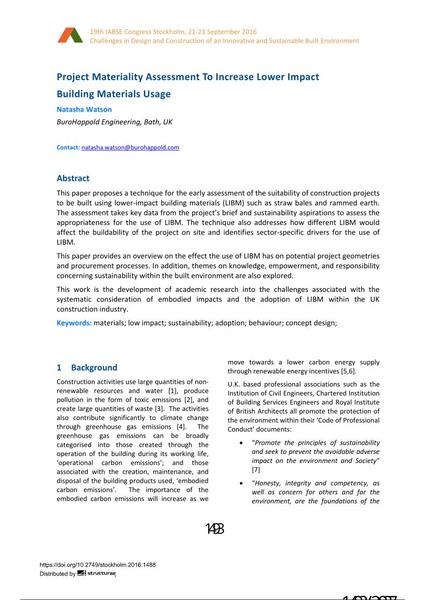Project Materiality Assessment To Increase Lower Impact Building Materials Usage

|
|
|||||||||||
Détails bibliographiques
| Auteur(s): |
Natasha Nancy Watson
(BuroHappold Engineering, Bath, UK)
|
||||
|---|---|---|---|---|---|
| Médium: | papier de conférence | ||||
| Langue(s): | anglais | ||||
| Conférence: | IABSE Congress: Challenges in Design and Construction of an Innovative and Sustainable Built Environment, Stockholm, Sweden, 21-23 September 2016 | ||||
| Publié dans: | IABSE Congress Stockholm, 2016 | ||||
|
|||||
| Page(s): | 1493-1500 | ||||
| Nombre total de pages (du PDF): | 8 | ||||
| Année: | 2016 | ||||
| DOI: | 10.2749/stockholm.2016.1488 | ||||
| Abstrait: |
This paper proposes a technique for the early assessment of the suitability of construction projects to be built using lower-impact building materials (LIBM) such as straw bales and rammed earth. The assessment takes key data from the project’s brief and sustainability aspirations to assess the appropriateness for the use of LIBM. The technique also addresses how different LIBM would affect the buildability of the project on site and identifies sector-specific drivers for the use of LIBM. This paper provides an overview on the effect the use of LIBM has on potential project geometries and procurement processes. In addition, themes on knowledge, empowerment, and responsibility concerning sustainability within the built environment are also explored. This work is the development of academic research into the challenges associated with the systematic consideration of embodied impacts and the adoption of LIBM within the UK construction industry. |
||||
| Mots-clé: |
durabilité
|
||||
